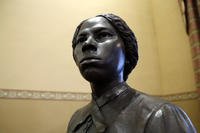During the latter days of World War II, U.S. Army Air Forces bombers dropped phosphorus smoke bombs to assemble groups of B-29 Superfortresses before flying over their targets. On April 25, 1945, Staff Sgt. Henry Erwin was in the lead bomber while making a low-altitude run on a chemical plant over Koriyama. It was his job to drop the phosphorus bombs
Erwin only had been in the war since 1944 after dropping out of aviation school and instead becoming a radio operator, mechanic and gunner. He graduated from training that year, and by February 1945, he was in the Pacific Theater flying unescorted bombing missions over Japan. That’s how he came to be in the belly of a B-29 over Koriyama.
He was positioned behind the forward gun turret of a Superfortress named “City of Los Angeles,” leading the attack. It was his job to light the phosphorus bombs and drop them from the plane before they could explode. Erwin was an extremely capable and dependable member of the crew, already boasting two Air Medals in his two months in theater.

On this mission, however, something went terribly awry. When Erwin pulled the pin of a bomb and released it into the chute to the outside air, the fuse lit the phosphorus too fast and was soon burning at temperatures higher than 2,300 degrees Fahrenheit. To make matters worse, the bomb jumped back into the B-29 and hit Erwin in the face.
Smoke from the bomb began to fill the plane until no one -- including the pilot -- could see. Erwin couldn’t see anyway, as the white-hot phosphorus had not only blinded him, but also burned off his ear and nose. Somehow, despite his wounds and the fact that he was also on fire, he had the presence of mind to know the bomb would soon burn through the entire plane, into the bomb bay and ignite the bombs.
He knew he had to get it out before it killed everyone aboard. Despite being unable to see, he felt around for the very heavy bomb, picked it up and carried it out of his position. Completely blind, he felt his way around the aircraft. This took him around a number of obstacles that he had to unlatch, including the navigator’s table, while holding the bomb underneath his armpit as he worked.
Erwin finally made it to the co-pilot’s window in the cockpit and tossed the bomb out the side of the aircraft. He then collapsed in the cabin, totally blinded, with his clothes on fire and skin burnt to the bone. His fellow crew members diverted course to get him medical care, but the phosphorus would not extinguish. Erwin had walked only 13 feet in 22 seconds, but to him, “it seemed like miles.”
The plane had been in a dive as the pilot tried to fly the smoke-filled aircraft. By the time the bomb was out and the smoke had cleared, the pilot finally righted the plane -- just 300 feet above the Pacific Ocean.
Erwin remained awake as the incendiary continued burning through his clothes and skin. The only words he spoke were questions about the safety of his fellow crew members. Once on the ground at Iwo Jima, surgeons worked to remove the phosphorus from his skin and eyes. As they took out piece after piece, each burst into flames when hitting oxygen in the air.
No one thought he would make it back home alive. As surgeons worked through the night, so did the command staff of the 21st Bomber Command. They wanted to present Erwin with the Medal of Honor before he died. His Medal of Honor citation was signed by Maj. Gen. Curtis LeMay the next morning. LeMay himself worked through the night to get its approval.
It was the fastest turnaround and approval time for any Medal of Honor ever presented.
They presented Erwin with the Medal of Honor citation that morning, but they were all wrong about him dying from his wounds. He was sent to Guam for further care and not only survived the ordeal. He received the medal itself, a special order from Honolulu, a week later. Erwin not only recovered but lived until age 80. He died in 2002.

-- Blake Stilwell can be reached at blake.stilwell@military.com. He can also be found on Twitter @blakestilwell or on Facebook.
Want to Learn More About Military Life?
Whether you're thinking of joining the military, looking for post-military careers or keeping up with military life and benefits, Military.com has you covered. Subscribe to Military.com to have military news, updates and resources delivered directly to your inbox.
















